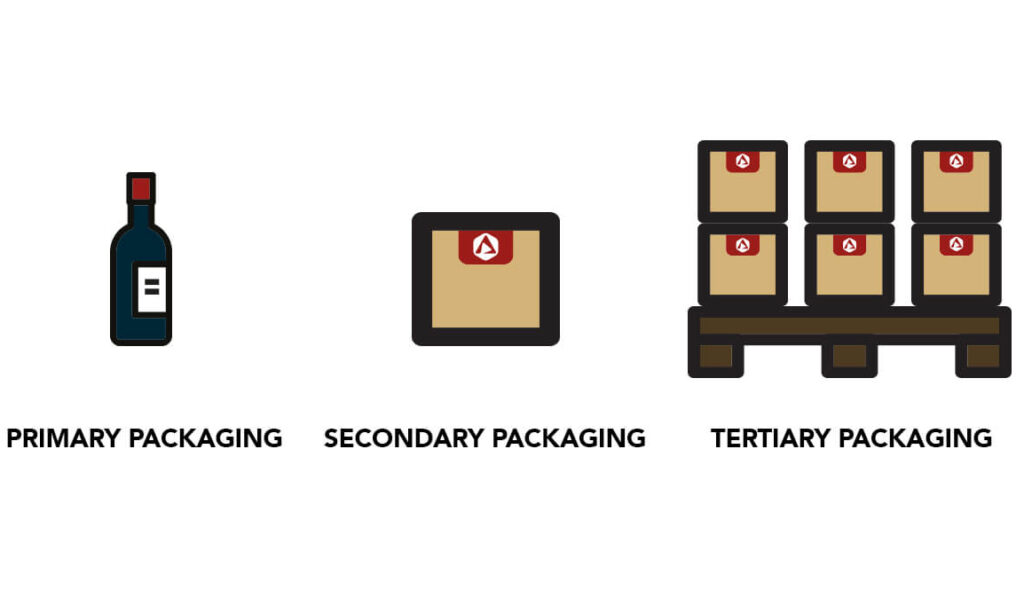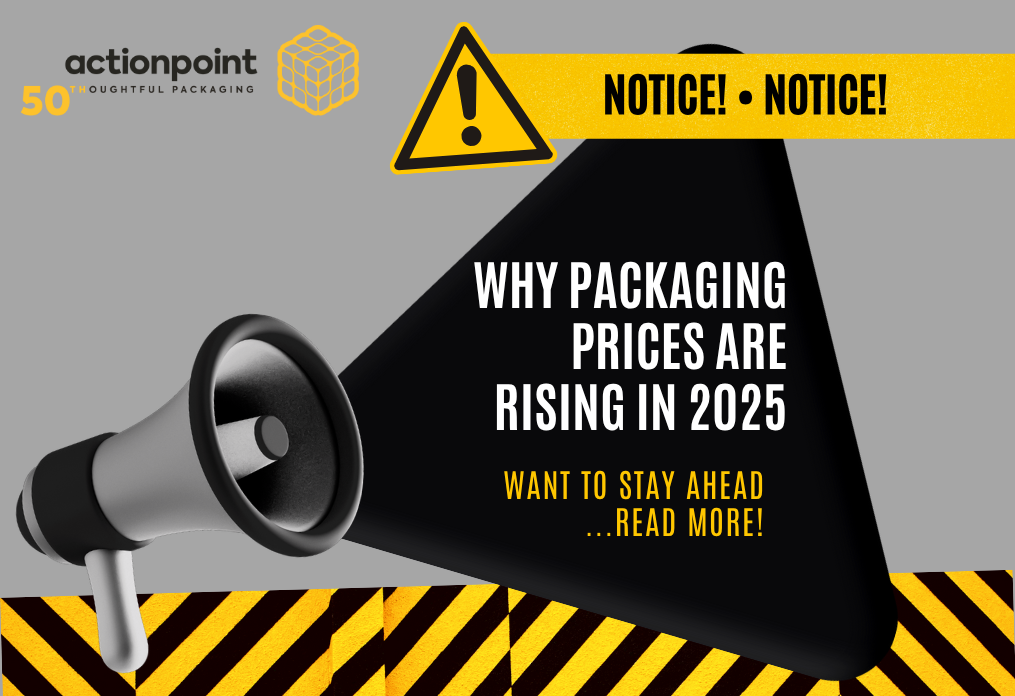April is the start of a new financial year and the month when a tidal wave of tax increases come into effect including uplifts in employer National Insurance Contributions along with rises in the National Minimum Wage. But despite escalating costs and shrinking margins, businesses still have opportunities to improve productivity, find savings, and stay ahead of the competition.
There are many proven business management tools and techniques to help organisations from any industry to succeed. In this blog, we look at the Lean approach and how to apply it to your packaging.
What is Lean?
The name gives you a clue. The objective of Lean is to remove waste for a leaner, more efficient organisation. It applies to every task performed by every person and is an ongoing endeavour. Waste doesn’t just mean waste material but any resource that is being wasted such as time, workforce, equipment, energy, and storage.
Any improvements must contribute towards delivering customer value – what your clients really want – rather than make changes just for the sake of it. So, always consider what you are doing from the customer’s perspective and ask if it is making things better for them.
Lean beginnings
This section is for the history buffs. The Ford Motor Company (FMC) planted the seeds for Lean philosophy, honing processes to increase the speed and lower the cost of producing cars. Ford was also the first automotive manufacturer to introduce a conveyor belt to the assembly line, in 1913, reducing the build time for a Model T from 12 hours to one and a half.
Inspired by Ford’s operation, Toyota Motor Company (TMC) took it to the next level. In the 1950s, TMC created the Toyota Production System. TPS combined Toyota’s concepts of Jidoka (intelligent automation that detects errors and ceases production of defective goods) and ‘just-in-time’ planning with cherry-picked techniques from Western automotive mass production.
The term ‘lean’ wasn’t introduced until 1988, by John F Krafcik in his article, Triumph of the Lean Production System. His research compared the productivity of car factories around the world, including Toyota’s. Two years later, Krafcik’s paper formed the basis of The Machine That Changed the World by James P Womack, Daniel T Jones, and Daniel Roos. The book became the bible of Lean, explaining the concept’s superiority over traditional mass production and how it could be applied to any type of organisation. It also formalised the 5 Lean principles.
Why Lean?
Customers change and so do their values, as demonstrated by the seismic shift towards sustainable packaging. Similarly, businesses are rarely static, whether it’s introducing new products, taking on more staff, moving premises, or expanding their sales territory. In both instances, your packaging processes need to keep up. What worked 5 years ago, or even last year, will not be the most rapid, error-proof, and cost-effective method today.
Even so, packaging often remains low on the list of priorities, left to simply tick over unless something disastrous happens. With Lean, efficiency is at the forefront every day, continuously improving quality, productivity, and customer satisfaction. All you need to do is follow the 5 principles.
5 principles of Lean
- Define value
Value refers to something that your customer considers to be valuable and is willing to pay for. When it comes to packaging, the most obvious values are swift delivery and goods arriving intact. But dig a little deeper and there are more to be found.
For the eco-conscious customer, minimal and ethically sourced packaging would be the order of the day, with materials that are easy to recycle. Consumers of premium brands, on the other hand, are more likely to expect a sumptuous unboxing that looks and feels luxurious. Vegan buyers will appreciate animal-friendly materials, inks, and manufacturing techniques. Others may value packaging that is within a certain budget, has fun and unique features, or can be reused or repurposed.
- Identify value stream
The value stream is the sequence of activities that contribute value. In other words, every step of the packaging process that you must take to give your customers what they want.
When identifying your value stream, be specific. Include every person, task, and decision involved from start to finish. Consider what information, materials, tools, and other resources are needed, and how they are acquired and implemented. When you’ve nailed that down, you will have a greater understanding of the entire process and it’s much easier to spot inefficiencies and waste.
Lean outlines the 7 main waste categories as follows:
- Transportation: unnecessary movement of people, materials, and parts from one processing step to the next.
- Inventory: excess raw materials or finished goods on site, which need to be managed and waste valuable storage space.
- Motion: excessive movement of operators within the workspace, making tasks take longer to complete.
- Waiting: any pause in activity due to a hold up in the preceding process, or a lack of materials, parts, available machines, instructions, or approval.
- Over-production: producing more than your customers need, in bigger quantities than required, or faster than the next step in the process can cope with.
- Over-processing: doing more activities or processing steps than necessary to deliver what the customer wants.
- Defects: machine or employee errors, poor quality materials, packaging design flaws, and damage rates.
- Create flow
Once you know where the problems are, you can start making improvements. Remove pointless steps such as duplication of effort, and tackle issues that delay or interrupt processes. Here are some examples of how you could achieve smoother flow:
- Rearrange warehouse layout so materials and equipment are as close as possible to where they are needed, to reduce walking time.
- Start a packaging stock agreement to minimise inventory while still having the packaging you need, when you need it.
- Optimise workstations to reduce movement such as walking, bending, and stretching to complete a task.
- Standardise packing methods for maximum efficiency and train operators in how to perform them.
- Automate repetitive tasks to decrease errors and free up staff for other activities that better use their skills.
- Assess packaging materials to eliminate over-packaging and source lighter, cheaper, more sustainable alternatives.
- Review packaging design to optimise packing, protection, cost-savings, carbon reduction, and presentation.
Check compliance to avoid delays and expense arising from laws such as Extended Producer Responsibility for Packaging.
- Establish pull
A pull system produces or moves goods in response to customer demand. A good example of this is a packaging stock agreement between a packaging supplier and a business. The agreement sets out the minimum and maximum amounts of stock the supplier will store on their premises. This packaging can be delivered to the business on demand, so it is available whenever needed. When stock depletes to a certain level, an order is automatically triggered to manufacture more so the supply of packaging never runs out.
Working at pull eliminates under- and over-production, so a company is not left struggling to meet a sudden upturn in sales or wondering where on earth to store excess packaging during quieter periods.
- Seek perfection
The final Lean principle is not about achieving perfection but relentlessly striving towards it. Continuous improvement is an ongoing, company-wide journey. Encourage your team to approach their roles with a Lean perspective. They’re the ones performing the tasks and ideally placed to suggest ways to do them better.
How Actionpoint can help
If you’re starting from scratch, it can feel overwhelming. The last thing you want to do is waste time identifying waste. That’s why we recommend an Insight packaging review, which is essentially a whistle stop tour of areas for improvement in your packaging process. Our experts have years of experience seeing what works and what doesn’t, so they know exactly where to look, giving you a big head start to create flow in your value stream.
In fact, bespoke packaging from Actionpoint works hand in hand with a Lean mindset. It is so adaptable to meet your needs. We can modify size, shape, features, structure, and materials to create a solution that perfectly fits your goods and your operation. In just a few tweaks, problems like sluggish packing lines, spiralling damage rates, and piles of packaging waste are consigned to history. To find out more, contact us today and let’s talk about leaner packaging.




